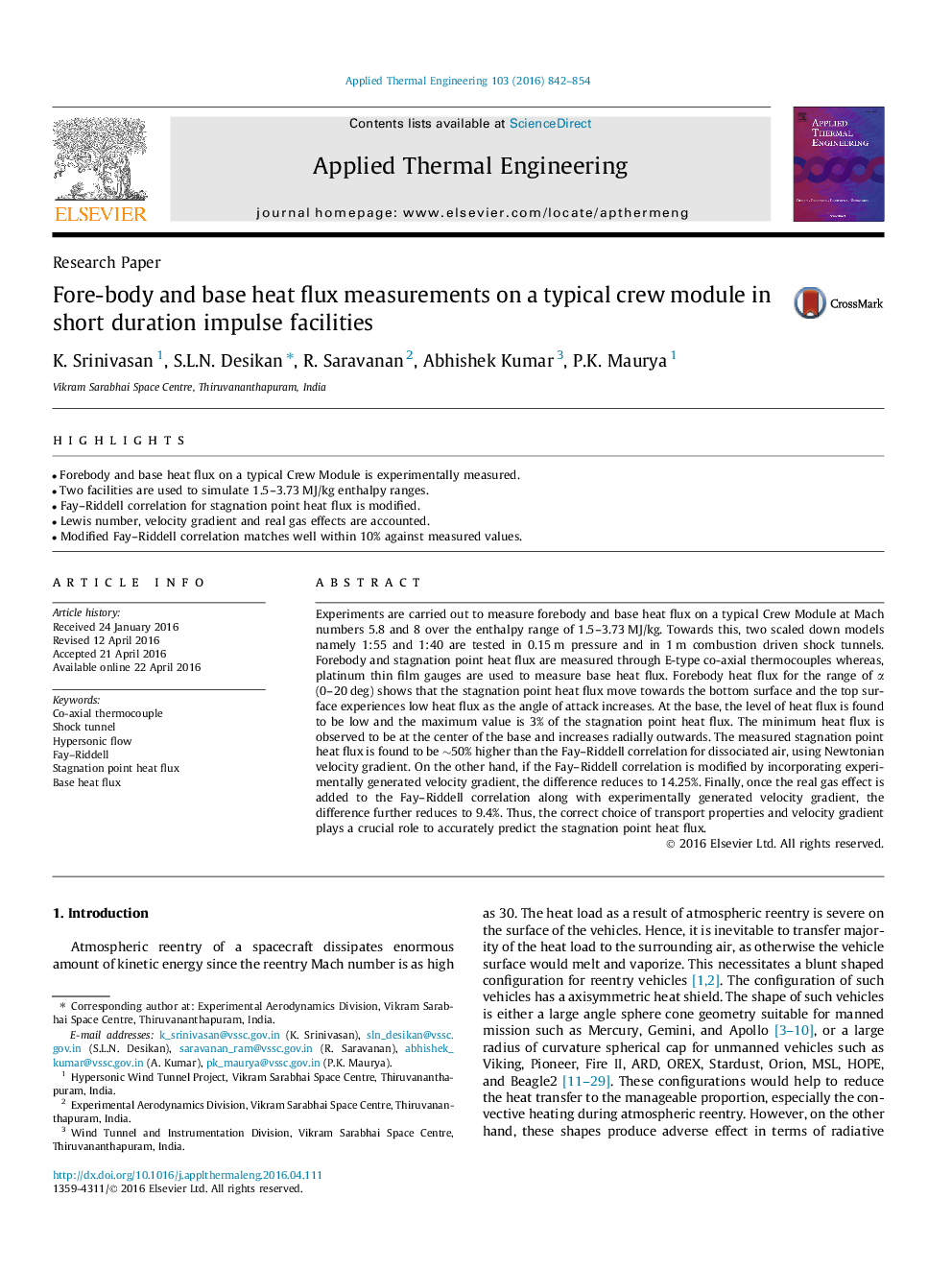| Article ID | Journal | Published Year | Pages | File Type |
|---|---|---|---|---|
| 7047882 | Applied Thermal Engineering | 2016 | 13 Pages |
Abstract
Experiments are carried out to measure forebody and base heat flux on a typical Crew Module at Mach numbers 5.8 and 8 over the enthalpy range of 1.5-3.73 MJ/kg. Towards this, two scaled down models namely 1:55 and 1:40 are tested in 0.15 m pressure and in 1 m combustion driven shock tunnels. Forebody and stagnation point heat flux are measured through E-type co-axial thermocouples whereas, platinum thin film gauges are used to measure base heat flux. Forebody heat flux for the range of α (0-20 deg) shows that the stagnation point heat flux move towards the bottom surface and the top surface experiences low heat flux as the angle of attack increases. At the base, the level of heat flux is found to be low and the maximum value is 3% of the stagnation point heat flux. The minimum heat flux is observed to be at the center of the base and increases radially outwards. The measured stagnation point heat flux is found to be â¼50% higher than the Fay-Riddell correlation for dissociated air, using Newtonian velocity gradient. On the other hand, if the Fay-Riddell correlation is modified by incorporating experimentally generated velocity gradient, the difference reduces to 14.25%. Finally, once the real gas effect is added to the Fay-Riddell correlation along with experimentally generated velocity gradient, the difference further reduces to 9.4%. Thus, the correct choice of transport properties and velocity gradient plays a crucial role to accurately predict the stagnation point heat flux.
Keywords
Related Topics
Physical Sciences and Engineering
Chemical Engineering
Fluid Flow and Transfer Processes
Authors
K. Srinivasan, S.L.N. Desikan, R. Saravanan, Abhishek Kumar, P.K. Maurya,
